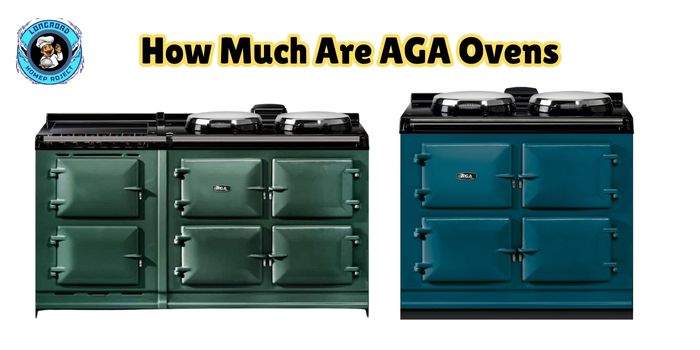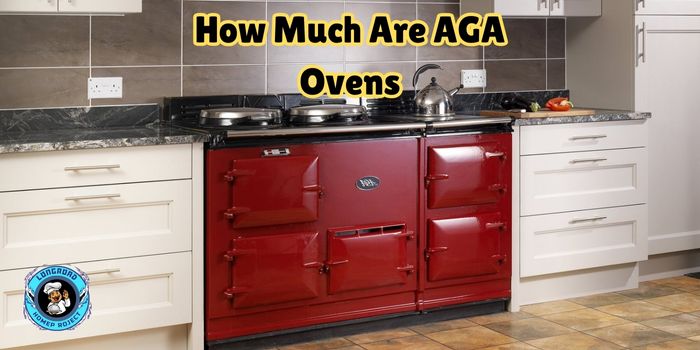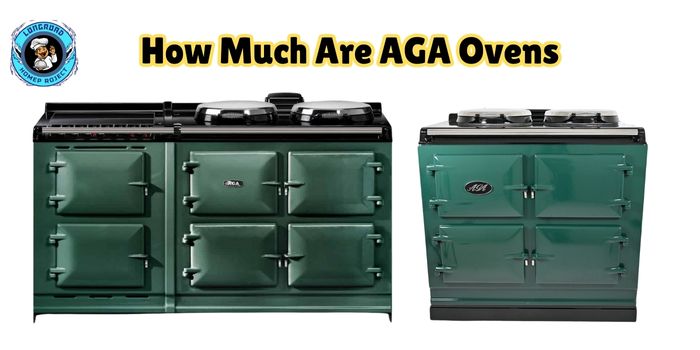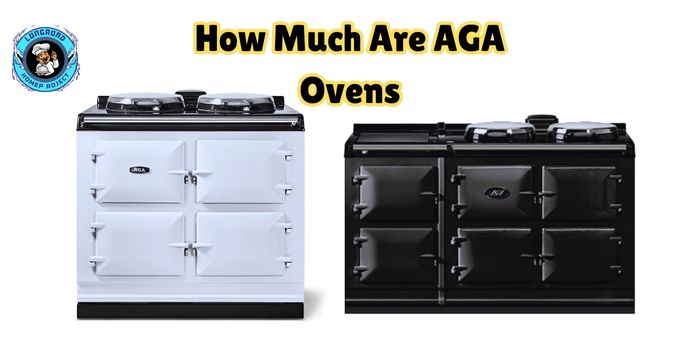As an Amazon Associate I earn from qualifying purchases.
I still remember the first time I walked into a kitchen with a gleaming AGA range — I was in love… until I saw the price tag. There it stood, radiating warmth and character, a centerpiece of culinary tradition. AGA ovens aren’t just cooking appliances; they’re a statement of craftsmanship, durability, and a certain timeless charm. But that beauty and performance come with a cost — one that often makes people pause before they pull out their wallet.
In this guide, we’ll break down how much AGA ovens cost in 2025, why they’re considered one of the most premium cooking investments you can make, and how factors like fuel type, size, and customization can dramatically affect the final price. Whether you’re curious about buying brand new, hunting for a second-hand bargain, or wondering why they’re so expensive in the first place, you’ll find every answer here — along with insider tips to help you choose wisely.
What Is an AGA Oven and Why Is It Special?
An AGA oven is more than just a cooking appliance — it’s a piece of culinary history with a reputation for quality, craftsmanship, and a distinctive way of cooking. Originating in Sweden in the 1920s, the AGA was invented by Nobel Prize–winning physicist Dr. Gustaf Dalén. He designed it to be efficient, convenient, and capable of delivering consistent results, especially for busy households. Over the decades, AGA cookers became a kitchen icon in the UK and around the world, beloved for their durability and unique cooking style.
Brief History and Heritage
The AGA story began in 1922, when Dr. Dalén, partially blinded from a laboratory accident, wanted to create an oven that was easy to use, retained heat efficiently, and didn’t require constant tending. His design used heavy cast iron to store heat and release it gradually, allowing food to cook gently and evenly. In 1929, the first AGA ovens arrived in Britain, and their popularity grew rapidly — becoming a symbol of rural charm and premium home cooking. Today, AGAs are still hand-built in the UK, and many original models are still in working order decades later.
Unique Features of an AGA Cooker
What makes an AGA truly special is its cast-iron build and heat-storage technology. Unlike regular ovens that turn on and off to maintain temperature, traditional AGAs are designed to stay always on at a consistent heat. The thick cast iron absorbs heat from a central source and radiates it gently, allowing you to cook without harsh direct heat. Many AGAs have multiple ovens (for roasting, baking, simmering, and warming) and separate hotplates for boiling and simmering — meaning you can cook several dishes at once without juggling temperatures.
AGA vs. Regular Oven
The main difference between an AGA and a standard oven is in how they generate and maintain heat. A regular oven heats up when you switch it on, using direct heating elements or gas burners. An AGA, on the other hand, stores heat in its heavy frame and releases it steadily, giving food a moist, even cook. This method reduces the risk of burning and preserves flavors better. Plus, an AGA doubles as a home heater — its warmth often spills into the kitchen, making it cozy year-round.
How Much Are AGA Ovens? (Current Price Ranges)
If you’ve been dreaming about owning an AGA, you might be wondering how much these iconic ovens actually cost. Prices vary significantly depending on whether you buy new, second-hand, or go for a refurbished model. Let’s break it down.
New AGA Ovens
When purchasing a brand-new AGA, the price depends on the model, size, features, and finish.
Entry-Level Models
If you’re looking for a smaller, more affordable option, the AGA eR3 Series and AGA 60 are good starting points. These compact models typically start at around $6,000–$8,000 USD (approx. £4,700–£6,300 GBP). They offer the classic AGA style but in a smaller footprint, ideal for modern kitchens with limited space.
Mid-Range Models
For those who want the traditional multi-oven setup with more cooking flexibility, mid-range AGAs like the AGA R3 or AGA Dual Control cost around $10,000–$15,000 USD (approx. £8,000–£12,000 GBP). These models usually feature three or four ovens, multiple hotplates, and various fuel options, from electricity to natural gas.
Luxury & Custom-Built AGA Ranges
At the top of the range, you’ll find AGA eR7 Series and fully custom enamel finishes. These can easily exceed $20,000 USD (approx. £16,000 GBP) and are often tailored to a customer’s exact specifications. Luxury features may include multiple hotplates, extra ovens, programmable controls, and a wider choice of enamel colors.
Price Factors to Consider
Several factors influence the final cost of an AGA oven:
- Size — Ranges vary from compact 2-oven models to large 5-oven setups.
- Fuel Type — Electric AGAs may cost more upfront but can be more energy-efficient.
- Number of Ovens — More ovens mean more versatility, but also a higher price.
- Enamel Color — Classic cream is standard, but custom colors add to the cost.
Second-Hand & Refurbished AGA Prices
Buying second-hand can make AGA ownership more affordable.
How Much You Can Save
Used AGAs can start from $3,000–$5,000 USD (approx. £2,500–£4,000 GBP) depending on age, condition, and model. Refurbished models from specialist dealers may cost more but still save you thousands compared to a new unit.
What to Look for in a Used AGA
- Check for rust or cracks in the cast iron.
- Make sure all hotplates and ovens heat evenly.
- Ask about previous repairs and maintenance history.
Risks & Hidden Costs
Used AGAs often need re-enameling, new seals, or reinstallation by an AGA engineer, which can add $1,000–$3,000 USD to the total. Also, older models may not meet current efficiency standards, so they could cost more to run.

Are AGA Ovens Expensive?
In short — yes, AGAs are more expensive than standard ovens.
Comparison with Other High-End Ranges
While a high-quality range cooker from brands like Wolf or Lacanche can cost $8,000–$15,000 USD, AGAs often sit at the higher end of this scale due to their unique build and heritage.
Why AGAs Are Considered a Luxury Investment
They’re hand-crafted, built from heavy-duty cast iron, and designed to last for decades. The heat-storage cooking method creates a distinct, gentle cooking environment that’s hard to replicate with conventional ovens.
Value Over Time — Long Lifespan vs. Upfront Cost
Although the initial cost can be steep, many AGAs are still in perfect working order after 30–50 years with proper care. That longevity, combined with their classic style, means they can hold their value and even increase the appeal of your hom
Why Is AGA So Expensive? (Breaking Down the Cost)
AGA ovens have a reputation for being one of the most luxurious and long-lasting cooking appliances in the world — but with that prestige comes a steep price tag. If you’ve ever wondered why these cookers cost significantly more than standard ovens, the answer lies in a mix of craftsmanship, heritage, and operational requirements. Let’s break down the factors that contribute to the high cost of an AGA.
1. Handmade Craftsmanship & Quality Materials
Every AGA is more than just a mass-produced appliance — it’s a carefully crafted piece of kitchen engineering. The iconic cast-iron build is made using a meticulous manufacturing process, often involving hand-finishing to ensure durability and flawless enamel coating. Cast iron retains heat exceptionally well, allowing for consistent cooking, and the multi-layer enamel finish is not only beautiful but also highly resistant to wear and tear. Unlike cheaper stainless steel ovens, each AGA is built to last for decades, which adds to its cost.
Imported Parts and Heritage Brand Value
AGA cookers originate from the UK, and many of the parts are either produced there or sourced from specialized suppliers in Europe. The brand has been around since the 1920s, with a reputation for reliability, tradition, and elegance. This heritage adds a “prestige premium” to the price — much like buying a luxury car brand. You’re not just purchasing an appliance; you’re investing in a piece of culinary history.
Installation Complexity
Unlike standard plug-and-play ovens, an AGA often requires professional installation that can involve significant kitchen modifications. Depending on the model, it may need a dedicated flue system, reinforced flooring for the heavy cast-iron structure, or specialized electrical or fuel connections (such as natural gas, propane, or oil). These installation requirements can add thousands to the overall cost and are a major reason AGA ownership is more expensive from the start.
Energy Consumption and Running Costs
Traditional AGAs are “always on,” meaning they use energy continuously to keep the cast iron warm and ready for cooking at any time. While this makes them incredibly convenient and perfect for slow cooking, baking, and even heating your kitchen, it also means higher running costs compared to energy-efficient, on-demand ovens. Newer AGA models do offer more flexible “on/off” or “dual control” options to reduce energy use, but if you opt for the classic design, you’ll need to budget for ongoing energy expenses.
In short: AGAs are expensive because they combine top-tier materials, artisanal manufacturing, brand prestige, complex installation, and high operational standards. For many owners, the cost is justified by the oven’s durability, cooking performance, and timeless aesthetic — making it more of a lifelong kitchen investment than a typical appliance.

AGA Oven Price UK vs. USA
When comparing AGA oven prices in the UK vs. the USA, there are a few key factors to consider beyond just converting the currency. While UK buyers often benefit from lower prices due to local manufacturing and greater availability, U.S. buyers may face added costs from importing these heritage cookers.
Currency Conversion Considerations
An AGA oven priced at £10,000 in the UK might seem like about $12,500 in the U.S. based on exchange rates. However, the final U.S. retail price is often higher due to shipping, import duties, and dealer markups. In some cases, U.S. prices can be 20–40% higher than the direct currency conversion suggests.
Availability Differences
In the UK, AGA ovens are widely available through authorized dealers and kitchen showrooms. In the U.S., they’re sold by select high-end appliance retailers, which means limited competition and potentially higher prices.
Import Duties & Shipping Costs for U.S. Buyers
Shipping an AGA oven overseas is no small task—these cast-iron cookers can weigh over 1,000 lbs (450+ kg). Freight costs, customs clearance fees, and import taxes all contribute to a higher final price for American customers.
Where to Buy an AGA Oven
Buying New
- Official AGA Distributors – The safest option for warranty coverage and authentic parts. In the UK, this means going directly through AGA Rangemaster or their official dealers. In the U.S., distributors like AGA Marvel handle sales.
- Premium Appliance Showrooms – Many high-end kitchen design stores feature AGA ranges in their displays. Visiting in person lets you see enamel colors, test features, and discuss custom options.
Buying Used or Refurbished
- Marketplace & Auction Sites – Websites like eBay, Gumtree (UK), and Facebook Marketplace often list second-hand AGAs at significant discounts.
- Specialist Second-Hand AGA Dealers – Businesses dedicated to refurbishing AGAs can provide restored models with warranties, offering a balance between affordability and reliability.
- “AGA Ovens Near Me” – Searching locally may help you avoid shipping costs and find bargains, especially when owners are moving or remodeling.
Fuel Types & Price Impact
AGA Oil Cookers – Known for their traditional charm and “always-on” warmth, oil AGAs can be more expensive to run and may require more frequent servicing. Initial purchase prices are often higher than electric models.
Electric AGA Ranges – Popular for their convenience and lower installation requirements. They often cost less to install but can be more expensive to run depending on electricity rates.
Dual-Fuel AGAs – These combine electric ovens with gas or oil hotplates, offering flexibility. Prices tend to be at the higher end due to added complexity and versatility.

FAQs
What price is an AGA?
The price of an AGA oven depends heavily on the model, size, and fuel type. In the USA, new entry-level models can start around $8,000–$10,000, while larger or custom AGAs can exceed $30,000. In the UK, prices generally range from £6,000 to £25,000 for new models.
Are AGA ovens expensive to run?
Yes, AGAs typically use more energy than standard ovens, especially older oil- or gas-fired versions. Modern electric and dual-control AGAs are more efficient and can help reduce running costs, but they’re still considered premium appliances with higher-than-average operating expenses.
Why are AGA stoves so expensive?
AGAs are hand-built using high-quality cast iron and enamel finishes. They’re produced by a heritage brand with over a century of history, and many models are made in the UK. The craftsmanship, durability, and prestige factor all contribute to the higher cost.
Can I buy a second-hand AGA?
Absolutely. Many people choose refurbished or second-hand AGAs to save money—often paying 30–60% less than the cost of a new one. However, you should factor in potential refurbishment, transport, and installation costs.
How long does an AGA last?
With proper maintenance, an AGA can last 40–50 years or more. Some AGAs from the mid-20th century are still in daily use today, which makes them a long-term investment.
Does the fuel type affect the price?
Yes. Electric AGAs are generally more expensive upfront but can be cheaper to run in certain regions. Oil and gas models can cost less initially but may have higher operating costs. Dual-fuel models combine flexibility with efficiency but tend to sit at the higher end of the price spectrum.
Final Thoughts
AGA ovens are not just cooking appliances—they’re lifestyle investments. Known for their blend of luxury, tradition, and long-lasting performance, AGAs command higher prices than most kitchen ranges.
If you’re considering one, it’s important to look beyond the sticker price. Factor in installation costs, running expenses, and ongoing maintenance to understand the total ownership cost. While AGAs can last for decades and add value to your kitchen, they’re best suited for those who cook frequently and appreciate the unique experience of an always-ready oven.
Before making the leap, try cooking on an AGA at a friend’s home, a showroom, or during a cooking demonstration. Experiencing the heat retention, even cooking, and versatility firsthand will help you decide whether the investment is worth it for your lifestyle.
As an Amazon Associate I earn from qualifying purchases.
